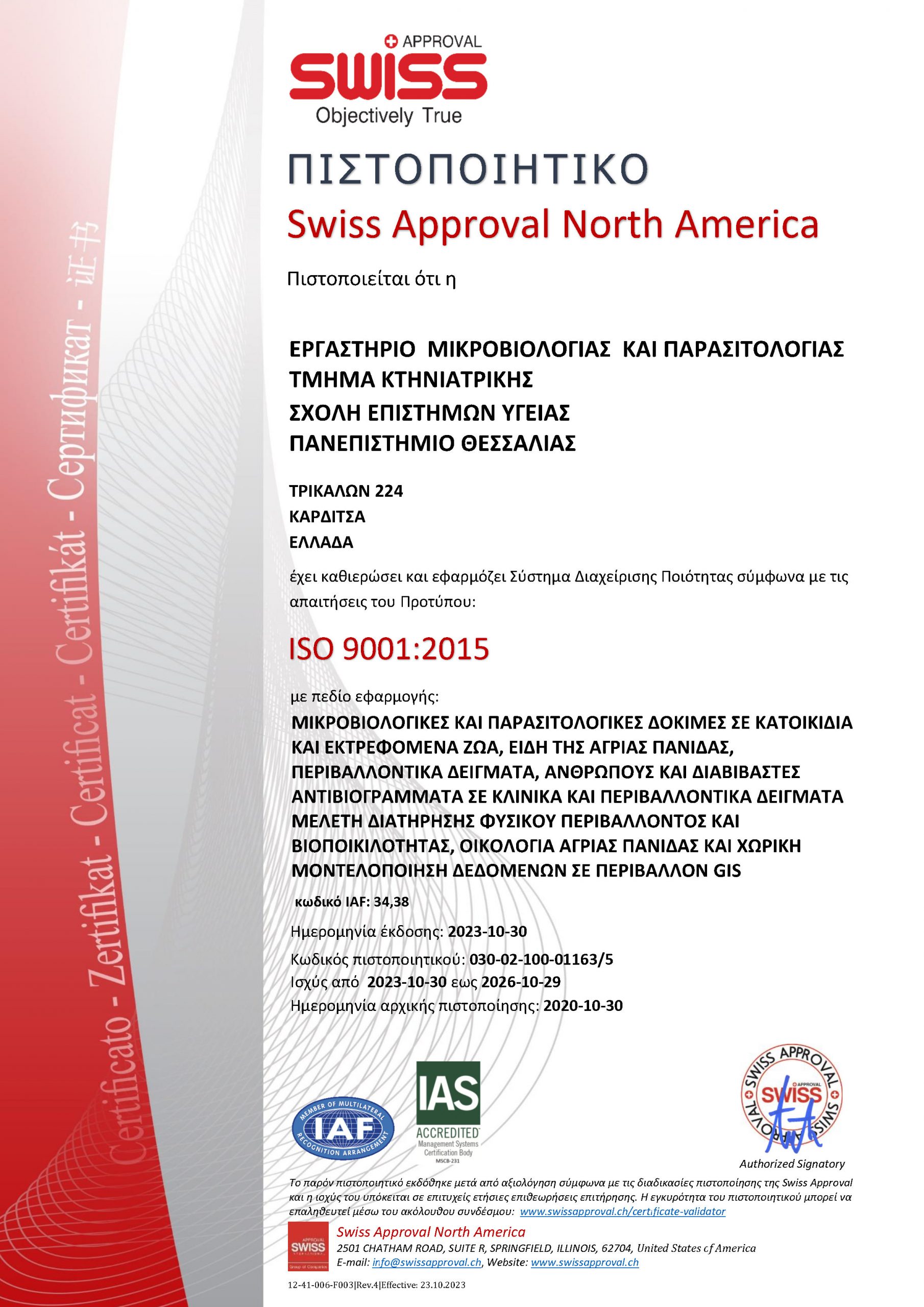
Laboratory of Microbiology and Parasitology
Quality Assurance Policy of the Laboratory is available here.
Laboratory of Microbiology & Parasitology focuses its research on all aspects of zoonotic infectious diseases; more specifically, the Laboratory is concentrated on the following areas of interest and research:
• The study of microorganisms that cause animal diseases and can be transmitted from animals to humans (zoonoses)
• The diagnosis of infectious animal diseases and zoonoses
• The identification and molecular characterization of pathogenic microorganisms that cause infections in animals and can be transmitted to humans
• The development and application of new molecular diagnostics
• The identification of new and emerging pathogens that can be transmitted from animals to humans
• The detection of emerging diseases that are transmitted from wild fauna
• Molecular genetics of the final host of microorganisms in order to find polymorphisms that confer resistance in animals
• The software development of molecular epidemiological surveillance of infectious animal diseases
• The geostatistical analysis of GIS data related to diseases outbreaks, the recognition of implicating environmental factors and high-risk areas of dispersion
Wildlife Ecology, Zoonoses & GIS Research Team
The Wildlife Ecology, Zoonoses & GIS Research Team is composed of scientists of several specialties, mainly members of the Laboratory of Microbiology and Parasitology. The head of the working group is professor Charalambos Billinis, who is a member of the European College of Zoological Medicine in the discipline of wildlife population health. The main research interests of the team are the study of diseases of wild fauna species and the establishment and implementation of large-scale surveillance studies on emerging and re-emerging diseases. Moreover, the team studies the potential interactions among wild and domestic animal species during the spread of diverse infectious agents, as well as the zoonotic aspects of wildlife diseases. The study of vector-borne diseases is another priority of the working group.
In a molecular perspective, the team conducts molecular typing of wildlife infectious pathogens, investigating the existence of polymorphisms or mutations that confer resistance to a specific animal diseases. In addition, the team carries out genomic and metagenomic studies, in order to clarify the population density in endangered species of animals and collect data for their habitats.
Further, the working group combines specialized applications statistics and spatial analysis, modeling / modeling-sharing prevention of diseases and zoonoses with the help of GIS (Geographic information systems), surveying geospatial data and building geographic databases, Geospatial Data Management and analysis.
Finally, the team has an extensive experience and specialization in environmental issues, being actively engaged in the collection, analysis, and interpretation of ecological data pertaining to wildlife species. Since 2008, the team participates in wildlife and habitat protection programs.
Research Grants received by the Laboratory and/or Head of the Laboratory
1. “Scrapie and Visna-Maedi of the sheep: study of the fatality, frequency of the diseases and PrP gene polymorphisms in flocks with mixed diseases” (funded by the University of Thessaly)
2. “The role of wildlife in the epidemiology of mycobacterium avium subsp. paratuberculosis in domestic ruminants in Europe” (funded by EU)
3. “Identification of Noda virus in cultured sea bass (Dicentrarchus labrax L.) with PCR method and molecular characterization of the virus” (funded by the University of Thessaly)
4. “Thematic network BVDV control” – Network coordinator, Paul Steinar Valle, Head of Department of Production Animal Clinical Sciences, Norwegian School of Veterinary Science (funded by EU)
5. “Molecular characterization and pathogenicity study of Greek PCV2 isolates” (funded by the Ministry of Education)
6. “BVDV eradication program in Greek dairy herds” (funded by ANIMPEX SA)
7. “Prevalence of sheep infectious diseases in Thessaly region” (funded by the Ministry of Agriculture)
8. “Novel Technologies for Surveillance of Emerging and Re-emerging Infections of Wildlife” (funded by EU 2009-2013)
9. “Interdisciplinary Investigation and Identification of Rotaviruses, Bartonella henselae and Leishmania spp from Children and Animal Hosts using Novel Technologies: Public Health Importance” (funded by EU 2007-2013)
10. “ESNIP 3 – European surveillance network for influenza in pigs (ESNIP) 3” (funded by EC, FP7)
11. “Integrated surveillance and control programme for West Nile virus and malaria in Greece – MALWEST” (funded by NSRF 2007-2013)
12. “Novel technologies for surveillance and characterization of Extended-spectrum β-lactamase and Carbapenemase producing Enterobacteriaceae, in humans and animals – CarbaTech” (funded by NSRF 2014-2020)
13. “Monitoring and Evaluation of the Conservation Status of Bird Species in Greece” (funded by Fotios Fasoylas & Nikos Mantzios – Yloriki Co)
14. “Monitoring the levels of infectious agents’ circulation and investigating the effect of environmental-hydrological parameters on vectors breeding sites” (funded by the Prefecture of Peloponnese – Peloponissos A.E.)
15. “Development of monitoring mechanism and monitoring the levels of West Nile virus circulation in the region of Peloponnese” (funded by the Prefecture of Peloponnese – Peloponissos A.E.)
16. “LIFE ARCPROM: Improving human-bear coexistence in 4 National Parks of South Europe” (funded by EU)
17. “Increasing dairy cows fertility through identification and exploitation of genetically thermotolerant individuals – THESUMMERCOW” (funded by NSRF 2014-2020)
To view the Curriculum Vitae or Personal Webpage of each member of the Department, click on the corresponding link.
Laboratory Director
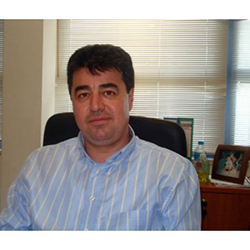
Staff



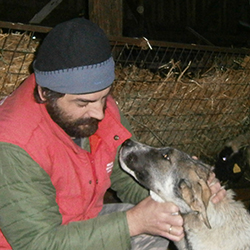

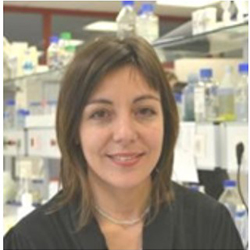


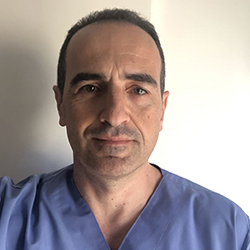



Kyriakos Spanoudis
PhD Student

